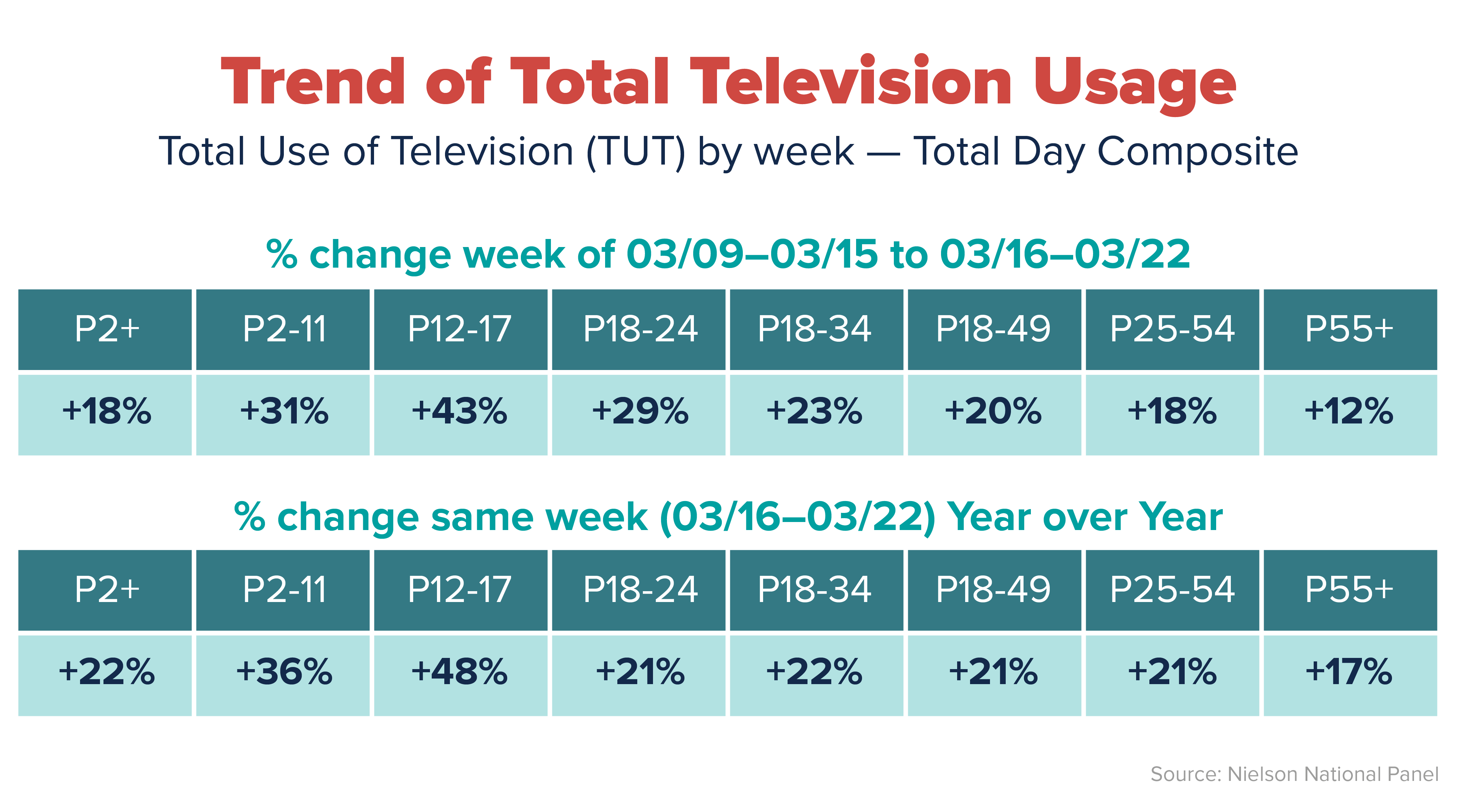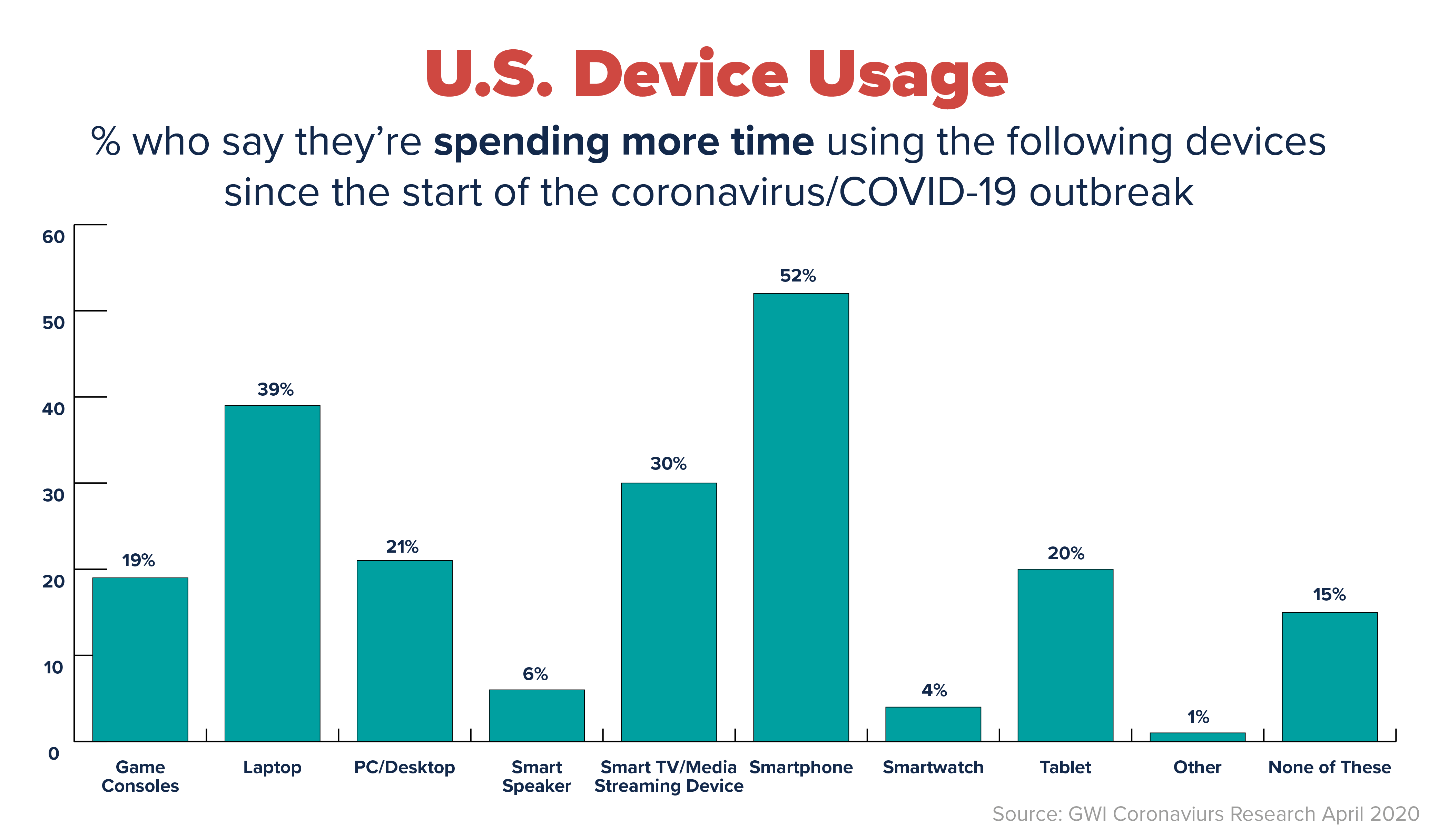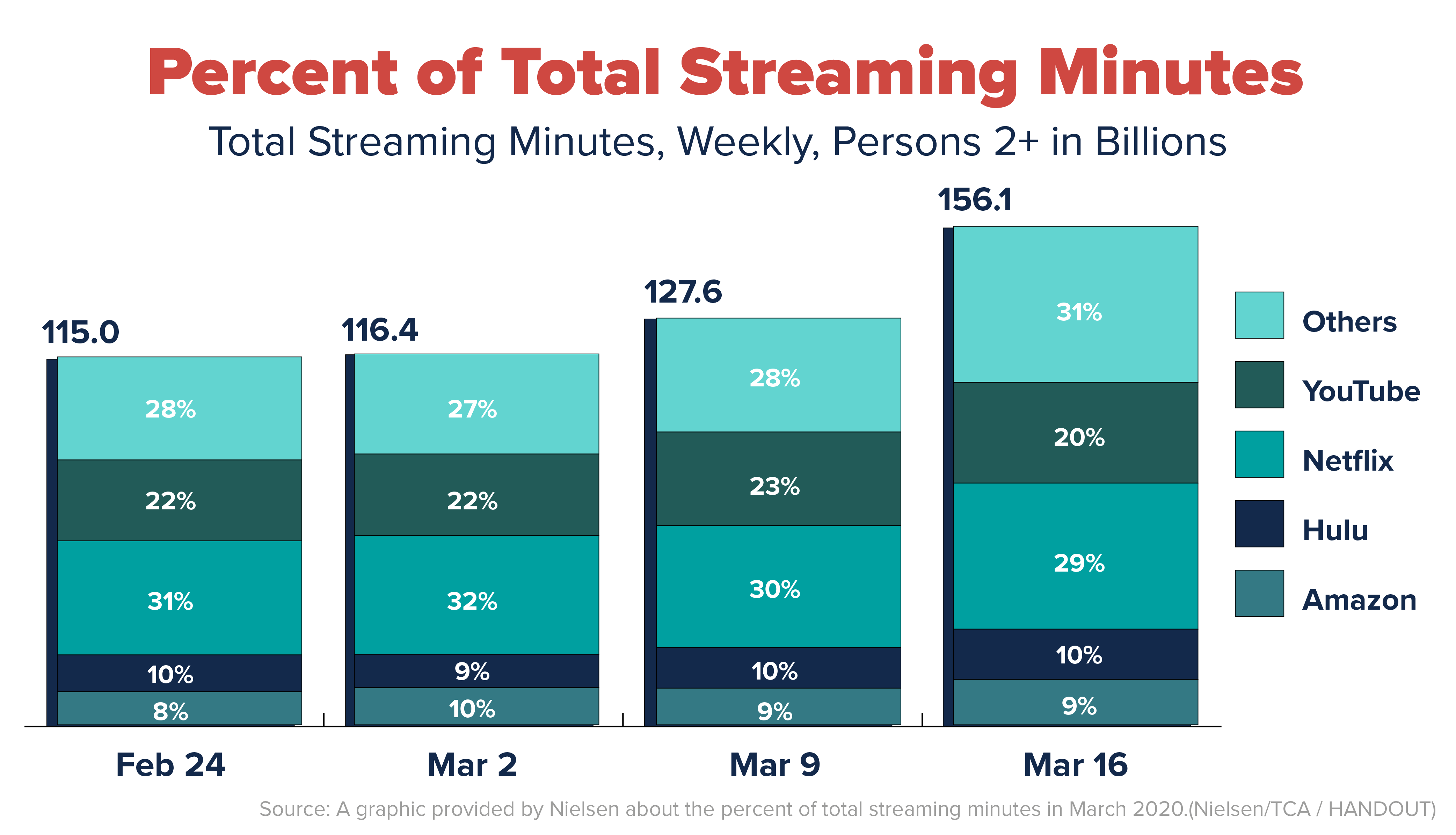
Media Consumption During the Pandemic & What it Means for Advertisers
It’s no surprise that COVID-19 has sparked massive change, but how has it impacted advertising? With more people at home using technology for work, entertainment, schooling and more, the methods of reaching audiences have shifted. And advertisers have taken notice, modifying their approach to reach audiences at their new location – home – and through new platforms – digital devices.
Channel Consumption
Several media channels have seen a dramatic increase in overall usage.
- Television usage is up 8–24% across all markets for adults 25–54 (Source: Nielsen Local TV View, Weekly PUT and NON-PUT sources, P25-64, Total Day). Live TV viewing, which has been declining in recent years, shot up 14% the week of March 16, when lockdowns were being instituted across the U.S.

- Streaming device usage in the first three weeks of March was the highest on record at an estimated 400 billion minutes. This includes connected TV (CTV) devices such as Amazon Fire Stick, Roku, Apple TV, smart TVs, etc. and over-the-top (OTT) media such as Netflix, Hulu, YouTube, Disney+, etc.
- Social media usage has increased with 32% of consumers spending more time on the top social media websites of Facebook, Instagram and Twitter. And with the popularity of TikTok amongst celebrities and consumers alike, as well as video-based platforms like YouTube, more videos are being uploaded than ever before — a 6% increase.
- Online gaming has exploded with a younger demographic now at home. Verizon is reporting a 75% increase in video game traffic during peak hours; a new potential opportunity for advertisers to reach a niche audience. Video game content streaming is also up. Amazon-owned Twitch hit an all-time high with over three billion hours watched, outpacing YouTube and Facebook Gaming.
Digital Devices Dominate
Overall time spent on digital channels has increased since the pandemic outbreak, with 78% of U.S. consumers reporting they are spending more time using digital devices for work and play. According to a GlobalWebIndex April 2020 report, smartphone usage has increased 52%, laptop usage almost 40% and use of smart TV/streaming devices by 30%. If your marketing and communications strategy does not include digital, your brand likely lacks relevance during this time.

{Streaming} Content is King
With more users at home, video streaming increased 85% in the first three weeks in March alone! This is, in large part, due to the content streaming services like Netflix, Amazon Prime, Hulu, Pluto TV and Roku are offering, as well as to the popularity of programs like Tiger King, which had an estimated U.S. audience of 34.3 million unique viewers within it’s first 10 days. In addition, several production companies are releasing new movies — Trolls World Tour, Onward, Bad Boys for Life — to video on demand or streaming services as premium content (for a premium price).
And video-to-TV streaming doesn’t end with pre-programmed content. More people are also streaming live events like virtual conferences, music concerts, sports events, theater shows, etc.
Audio streaming is seeing an increase in usage as well, with 10% of consumers listening to more podcasts and 18% listening to more radio streaming services like Spotify, Pandora, Apple Music and Amazon Music. And don’t forget about the kids. PRX released data showing that kid-targeted podcasts have seen an increase in both downloads and unique listeners — an almost 55% increase in consumption since the beginning of February.

Programmatic Placement through Multi-Channel Approach
To ensure you are reaching your target audience in the right place at the right time, Innovative Advertising recommends leveraging:
- A multi-channel approach to capture users on whichever screen they are consuming (mobile device, streaming TV, laptop during work hours, etc.). This may include a mix of OTT/CTV, streaming audio, social media, digital display, email marketing and more.
- Programmatic placement targeting your defined audience segments on whichever site, app or social network they are visiting versus placing media on a handful of websites only. By targeting the user (and not a specific website), you are able to reach your audience whether they are on CNN.com checking out the latest news, ESPN.com viewing the latest information about how COVID-19 may impact the NFL season, on a local news website or browsing a recipe to cook at home for the family.
Conclusion
It’s no secret that these are some strange times. But consumers of every generation are relying on their devices to inform, entertain, work and distract more than ever before, thereby creating a huge opportunity for brands to engage a captive audience. If you would like to take advantage of some of these growing trends, contact Innovative Advertising for the best solutions.

Laurie Mayeux
Sr. Media Buyer